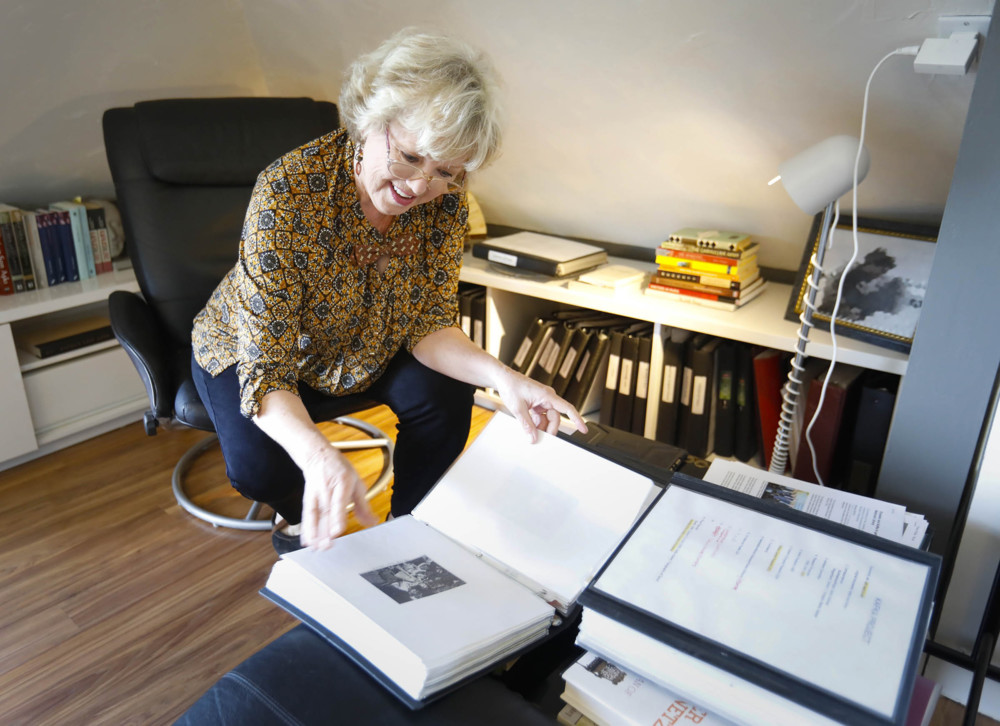By John Wilkens
The San Diego Union-Tribune
WWR Article Summary (tl;dr) As John Wilkens reports, “Even people who have never read “The Metamorphosis” have probably heard the term “Kafkaesque” and understand its allusion to anything soul-crushingly nightmarish in complexity.”
The San Diego Union-Tribune
“Congratulations,” people told Kathi Diamant. “We’re so proud of you!”
For what? she wondered.
Since 1978, Diamant has run the Kafka Project, a San Diego State University-affiliated research initiative that’s trying to locate some of Franz Kafka’s unpublished letters and notebooks. The hunt has taken her to several countries in Europe and the Middle East, led her to unmarked graves and dusty archives.
So when media outlets reported an end to a years-long battle over a major trove of Kafka papers, newly delivered from safe deposit boxes in Switzerland to a library in Jerusalem, people thought that meant Diamant’s work was finished. Hence the congratulatory phone calls and emails.
Except her work isn’t finished.
She’s still looking for one cache in particular: 35 love letters and 20 journals seized in 1933 by the Gestapo from Kafka’s lover.
Before Diamant came along, scholars had known anecdotally about the confiscation, but in Berlin she discovered the proof via paperwork authorizing the raid.
Further sleuthing makes her believe the papers might be in an archive, also in Berlin, that’s never been inventoried. It purportedly contains papers related to known communists, which is promising because Kafka’s lover, Dora, was involved with communists. That’s why the Gestapo came calling.
Researchers are trying to raise $500,000 to do the inventory. When they get the money, it will take about two years to catalog what’s in the archive. Maybe then, Diamant said, her search really will be over.
The fact that anyone still cares about Kafka, who died at age 40 in 1924, speaks to the enduring impact of his work. Even people who have never read “The Metamorphosis” have probably heard the term “Kafkaesque” and understand its allusion to anything soul-crushingly nightmarish in complexity.
The author, who wasn’t well-known when he died, asked a longtime friend, Max Brod, to burn all of his papers when he was gone. Brod decided instead to publish many of the stories, including “The Trial” and “The Castle,” and that brought Kafka ongoing posthumous fame.
When Brod died in 1968, he left the Kafka papers to his secretary, who in turn bequeathed them to her daughters. Israel sued for ownership of the archive in 2008, citing a will Brod wrote 60 years earlier promising his estate to a public Jewish library in Palestine. A legal fight has been underway ever since, spilling into Germany after some of the papers, reportedly stolen from Brod’s collection, wound up there.
The court fight ended in favor of Israel, and the papers have been arriving in groups at the National Library, located at the Hebrew University of Jerusalem. At a news conference this month, library officials displayed hundreds of documents, most of them previously published, including handwritten copies of one of Kafka’s earliest pieces, “Wedding Preparations in the Country.”
News coverage described the papers as “the final batch.” Diamant suspects that’s why friends and colleagues thought her own project had reached the finish line.
There are a couple of problems with that thinking, she said. For one thing, not all of the Brod archive has been recovered. Several key pieces are known to be missing. And then there’s the separate collection of letters and journals confiscated by the Gestapo from Kafka’s lover, Dora.
Diamant got interested in all this because she shares a last name with Dora. (As far as she knows, they are not related.) A college professor told her about the coincidence during a course on German literature at the University of Georgia in 1971. Intrigued, Diamant went looking for more information about Dora but couldn’t find much.
She turned to other things, launching a career in acting and television that brought her to San Diego in 1983 to co-host a morning show, “Sun Up San Diego.” A year later, she did a segment on a Holocaust exhibit at the San Diego Museum of Art that kindled her interest in Dora, as did a new biography about Kafka published around the same time. She flew to Vienna and saw the room where Kafka had died, in Dora’s arms. She went to Prague, where Kafka is buried. She thought there was a story to be told.
When the TV show ended in 1990, Diamant dove more deeply into the research. On one trip to England, she found Dora’s unmarked grave, and then found one of Dora’s nephews in Israel, who paid for a headstone.
Diamant gathered enough material for a biography about Dora, “Kafka’s Last Love,” which was published in 2003 and drew reviews in more than 60 publications around the world. It’s been translated into a half-dozen languages.
Her work has caught the attention of more traditional scholars, including Babak Rahimi, a literature professor at the University of California San Diego, who called Diamant “a good, solid researcher who has shed important light on the subject.”
The light is still on, she wants people to know, despite the recent media reports. She’s headed to Israel to continue her searching.
___
Distributed by Tribune Content Agency, LLC.














































































































































































































































































































































































